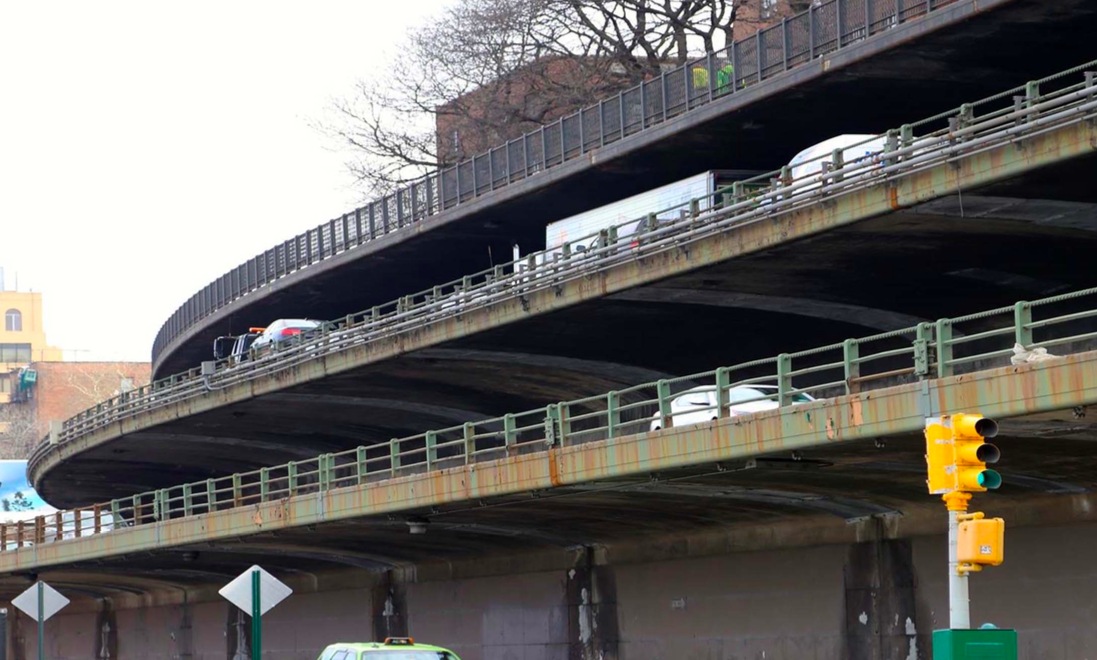Opinion: The BQE is in a State of Total Crisis — and So are the Local Residents Who, Literally, Need a Breath of Fresh Air

By April Somboun, Candidate for City Council in District 33.
We cannot ignore the Brooklyn Queens Expressway (BQE) any longer — and we can’t allow the same old elected officials and other special interest groups to dictate what happens in District 33’s backyard.
Without question the BQE is in a state of emergency. Structurally, the BQE is a disaster waiting to happen -- one that has the potential to risk lives and cripple our city should it collapse. What happened in Mexico City and Minneapolis can happen here, too.
Five years ago a comprehensive inspection led to near-failing reviews — the BQE, at best, was in “fair” and “poor” condition. Between water and salt infiltration corroding its steel to excessive use over the bridge’s nearly-60 year history, the BQE was on its last leg, with many experts and engineers suggesting it could be unfit for use as early as 2026.
Time is not on our side, and we can’t delay having a plan for rebuilding the BQE any longer. There are already holes in the BQE’s deck, and wire mesh hangs beneath sections of it to stop concrete from falling on the people and cars below. In addition, the structure vibrates so violently that some in Brooklyn fear that their buildings will collapse.
A plan that helps District 33 breathe
Since day one, air pollution has plagued neighborhoods along the BQE. South Williamsburg is a perfect example. The BQE weaves through this densely-populated community and has driven exponential increases in local air pollution. Today, asthma rates in this community are double the City’s average — and out of 59 New York City districts, this district is home to the third highest number of asthma sufferers.
Even those who aren’t actively suffering the health consequences are experiencing them. A recent survey found that the four parks adjacent to the Williamsburg Bridge on/off ramp have heightened levels of PM2.5 — fine particles that, given their size, can infiltrate deep into residents’ lungs and, even, blood causing short- and long-term medical issues. This is unacceptable. Green spaces should be areas to explore, engage, and play, not to worry about lifelong lung damage or that falling debris or concrete could injure or even kill them at any moment.
Rebuilding the BQE — and our green spaces
We need to examine the impact of the BQE and eventual repairs or rebuilding and the impact it has on every single New Yorker in its path with an eye on infrastructure, safety, feasibility, and well-being. That’s why one of my top priorities as city councilwoman for District 33 will be to push the Mayor and other leaders to finalize a community-first plan for the BQE that helps our constituents breathe easier — literally.
For starters, I am adamant that we keep the City away from the Brooklyn Promenade to support BQE construction. While I recognize the physical constraints in this area, giving up green space simply isn’t an option and is entirely counterintuitive to improving the district’s health and happiness. It’s part of my Contract with District 33 — I’m committed to creating a task force to provide meaningful insights and recommendations to the new mayor and Department of Transportation, ensuring the BQE issues are resolved — and never at the expense of our community.
Second, in lieu of shutting down or contaminating these precious spaces, we need to go all in and be innovative and think bigger such as creating a greenway belt that helps us meet our climate goals as a city and connects communities from Sunset Park all the way to Williamsburg and beyond. I support projects like BQGreen. This proposed new park would run over the BQE from South 3rd to South 5th Streets, giving residents lots of new open space, flower gardens, sports fields, an indoor swimming pool, water play zone, and more, all in a safe, open, welcoming space.
And third, we need to see the BQE rebuild as a profound moment in time — an opportunity to get rid of some of the Moses-era design and build something that pushes our city and state's climate goals forward, helping us achieve net-zero greenhouse gas emissions. It is also an opportunity to show the world how aging transportation infrastructure can be reimagined, designed and built to improve the environment, quality of life and safety.
This is New York City and we should be leading when it comes to green infrastructure planning, combating climate change, and supporting our citizens as they continue to grow and thrive in our vibrant neighborhoods. By considering the possibilities and prioritizing our community’s health first and foremost, we can achieve an unparalleled balance of structural change, climate change, and curbing air pollution and other ongoing health crises in District 33 and beyond.
My family along with others, breathe in the BQE pollution, can see and feel the vibrations of the BQE every single day from our apartments - this is a priority of mine as your next city council member.




